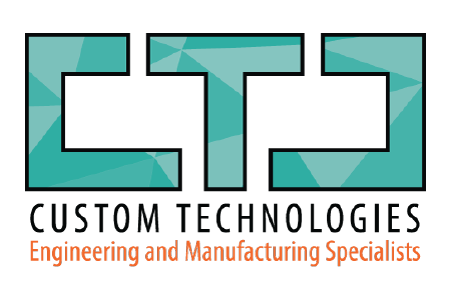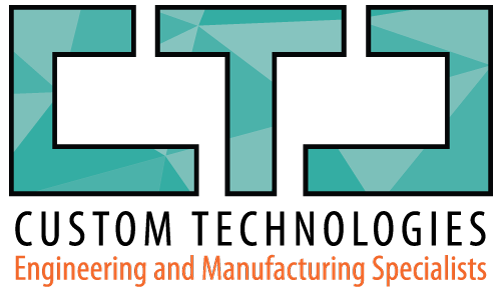The United States Patent and Trademark Office defines a patent as a grant of property right that is issued to an inventor for their unique invention. Technically speaking, what this means is that the patent holder can prevent anyone else from making, using, or selling their invention for the life of the patent – a period that is typically 20 years from time of filing. Practically speaking, this means that only the inventor – or those parties given the inventor’s permission – can produce or sell what is patented.
Types of Patents
Patents are available in three types – utility, design, and plant. Utility patents go towards the creation or discovery of a new process, machine, or even a composition of matter. Design patents are given to those with new designs for an article of manufacture. Plant patents are awarded when a new variant of plant that has the ability to reproduce asexually is invented. In common speak, most often when people just say “patent,” they mean a utility patent, as it is the most common.
Do I Need a Patent?
Before getting a patent, it is important to realize what a patent really is. It is a document that explains an invention, in detail, and then gives you a legal right to sue someone if they try to sell/release something that is sufficiently similar. It is not, in any fashion, a guarantee that someone will not try to replicate your work. After all, if your idea is a good one, other people may be racing to create similar products.
Even if you are granted a patent, there are no “patent police” that will go after people infringing on your patent. You must spend the time and money to bring someone to court if you believe they are infringing. This can often be an expensive process, with no guarantee for success. Therefore, it is important to consider these factors before you spend the time and money to acquire a patent. A patent that you are not prepared to defend is not worthwhile to get.
Note also that the process of obtaining a patent will legally require you to describe your design in excruciating detail. This means that soon after you apply for the patent, your design will become publicly available for others to view. Of course, others may then take inspiration from your idea and try to make similar products. If those products are too similar, you may attempt to stop them once your patent is issued. But, as we have emphasized before, there are no guarantees. Therefore, sometimes the best thing to do is to keep your idea “secret,” and not apply for a patent. These types of secrets are called trade secrets, and can in certain circumstances be a reasonable route to take for many inventions or processes. One famous example of a trade secret is the formula for Coca-Cola®.
However, some inventions can’t be kept secret like the Coca-Cola® formula. If your idea is one that would be easy to reverse-engineer if it were sold on the open market, then you certainly may want the legal protections a patent provides.
The Patent Process
Patents in the US require that you be the “first to invent” as well as the “first to file.” So you should try to be as organized as you can as you develop your idea. Save emails, notes, and anything relevant to a file or folder (make backups!), and then when you are ready to begin the filing process, you can provide your patent attorney with everything they need.
It is also very important to note that you should keep your invention idea secret until you are ready to file. If you disclose the idea to anyone, they must agree in writing to keep the information confidential. Otherwise your disclosure to them is considered “public.” Once you disclose your idea publicly to anyone, you only have a maximum of one year to make your filing. If more than a year goes by, you will never be able to patent your idea. The rules on this are very specific and strict.
Finally, it’s important to note that US patents are only valid nationwide, but most patents can be extended for overseas protection as well (for additional fees).
Patent Costs
The fees for filing, search, and examination of a patent could cost you around $2,000 out of pocket if you do the whole thing yourself. If you choose to hire a patent attorney for assistance (which most people do), there is an additional cost of approximately $300 per hour depending on their experience and size of their team. How many legal hours will it take? National industry averages estimate that a typical patent filed by a patent attorney will cost the inventor $10,000 to $12,000 just to get the patent application filed. If the patent office then argues back and forth with the applicant about the application (which is typical), additional costs often climb from there.
With such a high cost, why might you hire a patent attorney? Patent attorneys handle patents for a living and are familiar with the very complex paperwork and rules required to submit your patent. It is highly frustrating if your patent is rejected because you forgot to file a form or use the right type of legal clause on a single page of your application. Patent attorneys also are familiar with the series of multiple deadlines associated with patents. There are maintenance fees to pay as well after a patent is issued, which have very unforgiving deadlines. A patent attorney can manage all of that complicated procedure.
Interestingly, patent attorneys are one of only two types of attorneys in the US who must pass a second exam above the bar exam for regular attorneys. The other type is maritime law specialists). Patent submission is (perhaps frustratingly) a complex process, and many inventors who do not engage an attorney make mistakes than can forever invalidate their patent applications.
First Steps in Getting a Patent
Of course, since patents are expensive, we at Custom Technologies recommend that you first consider the market impact of your invention. What’s the point of owning the rights to an invention that no one wants to buy? Our signature Minimum Viable Launch™ approach will take your product to market quickly and cost effectively. The process itself includes an analysis that aids in ensuring that your idea is realistic for function and manufacture, modeled through CAD with true-to-life dimensions, prototyped in-house, produced, operationalized, and launched. We can guide you not only through the initial design, but can also recommend our in-house patent attorney to give you personalized advice and guide you through the patenting process too. We will not be hesitant to tell you that your idea is not an ideal candidate for patenting. Custom Technologies is committed to the success of your product launch, and we do not aim to recommend complex and expensive legal services if they are not warranted.
Patents themselves are complex legal documents, but they can give you a strong competitive advantage. They can definitely give you an edge over your competition and can ensure that you will feel more secure knowing that knock-offs can be legally knocked out. Depending on the nature of your product, there are many protective options: our legal team might recommend a copyright or trademark instead, or in addition to, a patent.
Custom Technologies eliminates time-wasting handoffs and miscommunication by offering expertise in all areas of manufacturing ranging from design to custom automations. Contact us today to learn more about how you can spend less time getting your project off the ground and more time perfecting it.
Call (573) 756-1433, email us at sales@customtechnologies.com, or visit customtechnologies.com.
Legal Disclaimer
This article is provided for general information by Custom Technologies LLC and should not be considered legal advice. Consult an attorney of your choice to review the specifics of your individual case and circumstances.


